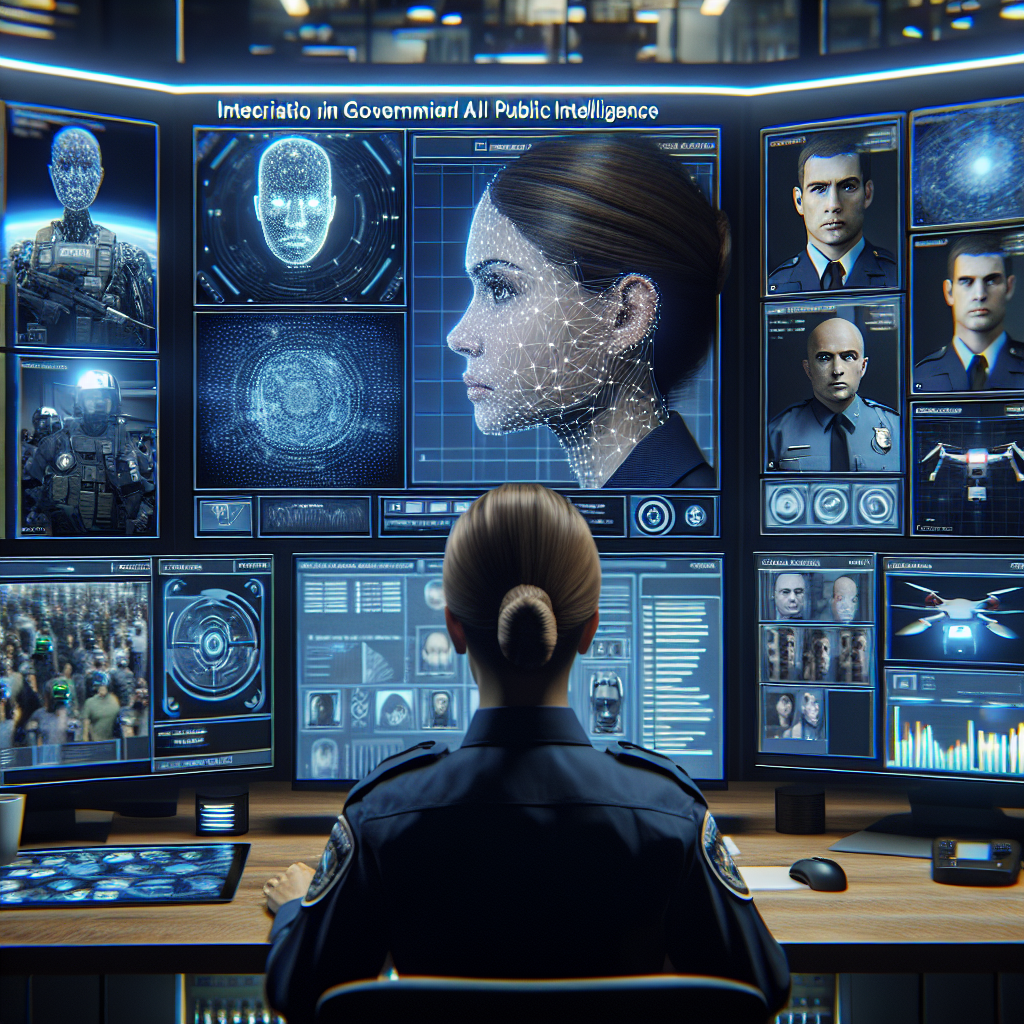In recent years, the use of artificial intelligence (AI) in government public safety and law enforcement has been gaining traction. From predictive policing to facial recognition technology, AI has the potential to revolutionize the way that law enforcement agencies operate and keep communities safe. In this article, we will explore the various uses of AI in public safety and law enforcement, as well as the potential benefits and challenges associated with its implementation.
One of the key ways in which AI is being used in public safety and law enforcement is through predictive policing. Predictive policing uses algorithms to analyze crime data and predict where crimes are likely to occur in the future. By identifying hotspots and patterns in criminal activity, law enforcement agencies can allocate resources more effectively and prevent crimes before they happen. This proactive approach to policing has the potential to reduce crime rates and make communities safer.
Facial recognition technology is another AI tool that is being used in law enforcement. Facial recognition algorithms can analyze images or videos to identify individuals by comparing them to a database of known faces. This technology has been used to track down suspects in criminal investigations, identify missing persons, and enhance security at public events. However, facial recognition technology has also raised concerns about privacy and civil liberties, as well as the potential for bias and inaccuracies in the algorithms.
AI is also being used in public safety and law enforcement to analyze large amounts of data and identify trends and patterns that may be missed by human analysts. By using machine learning algorithms, law enforcement agencies can sift through vast amounts of data to uncover hidden connections between criminals, detect anomalies in financial transactions, and track the movements of suspects. This data-driven approach to policing can help law enforcement agencies to be more efficient and effective in their crime-fighting efforts.
In addition to predictive policing and facial recognition technology, AI is also being used in public safety and law enforcement for a variety of other applications. For example, chatbots and virtual assistants can be used to provide information and support to the public, while drones and robots can be used for surveillance and search and rescue operations. AI-powered tools can also be used to analyze social media posts for threats or monitor traffic patterns for congestion and accidents.
While the use of AI in public safety and law enforcement has the potential to improve efficiency and effectiveness, it also raises a number of ethical and legal concerns. One of the main concerns is the potential for bias in AI algorithms, which can lead to discriminatory outcomes and injustices. For example, facial recognition technology has been found to be less accurate when identifying individuals with darker skin tones, leading to concerns about racial bias in law enforcement practices.
Another concern is the lack of transparency and accountability in the use of AI in public safety and law enforcement. Many AI algorithms are proprietary and opaque, making it difficult for external auditors to assess their accuracy and fairness. This lack of transparency can undermine public trust in law enforcement agencies and raise questions about the legality of using AI in criminal investigations.
Despite these challenges, there are also many potential benefits to using AI in public safety and law enforcement. AI has the potential to help law enforcement agencies to be more proactive and data-driven in their crime-fighting efforts, leading to better outcomes for communities. By leveraging the power of AI, law enforcement agencies can enhance public safety, improve response times, and reduce crime rates.
In conclusion, the use of AI in government public safety and law enforcement is a complex and evolving field. While AI has the potential to revolutionize the way that law enforcement agencies operate, it also raises a number of ethical and legal concerns that must be addressed. By carefully considering the benefits and challenges of AI in public safety and law enforcement, we can ensure that these technologies are used responsibly and ethically to keep communities safe.
FAQs:
Q: How is AI being used in predictive policing?
A: AI is being used in predictive policing to analyze crime data and predict where crimes are likely to occur in the future. By identifying hotspots and patterns in criminal activity, law enforcement agencies can allocate resources more effectively and prevent crimes before they happen.
Q: What are some of the concerns with using facial recognition technology in law enforcement?
A: Some of the concerns with using facial recognition technology in law enforcement include issues of privacy and civil liberties, as well as the potential for bias and inaccuracies in the algorithms. Facial recognition technology has been found to be less accurate when identifying individuals with darker skin tones, leading to concerns about racial bias in law enforcement practices.
Q: How can AI help law enforcement agencies to be more efficient and effective?
A: AI can help law enforcement agencies to be more efficient and effective by analyzing large amounts of data and identifying trends and patterns that may be missed by human analysts. By using machine learning algorithms, law enforcement agencies can uncover hidden connections between criminals, detect anomalies in financial transactions, and track the movements of suspects.
Q: What are some of the potential benefits of using AI in public safety and law enforcement?
A: Some of the potential benefits of using AI in public safety and law enforcement include improved efficiency and effectiveness, better response times, and reduced crime rates. AI has the potential to help law enforcement agencies to be more proactive and data-driven in their crime-fighting efforts, leading to better outcomes for communities.

